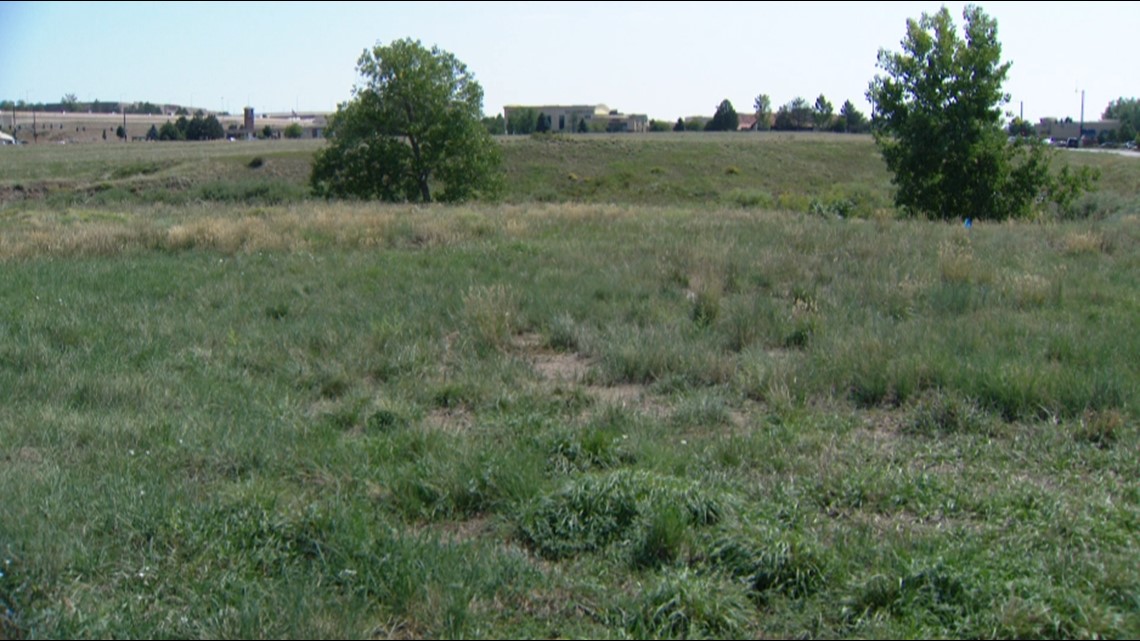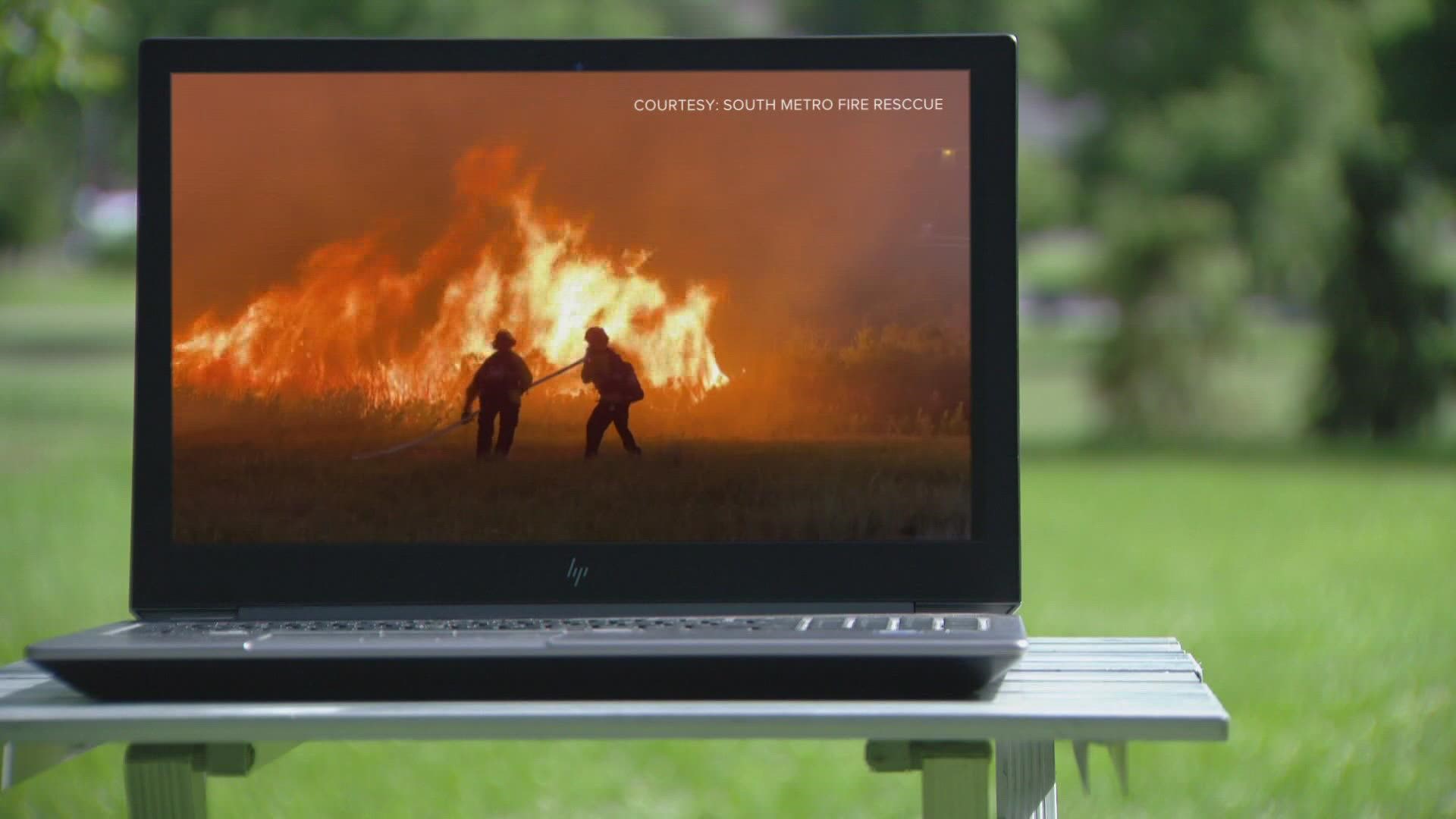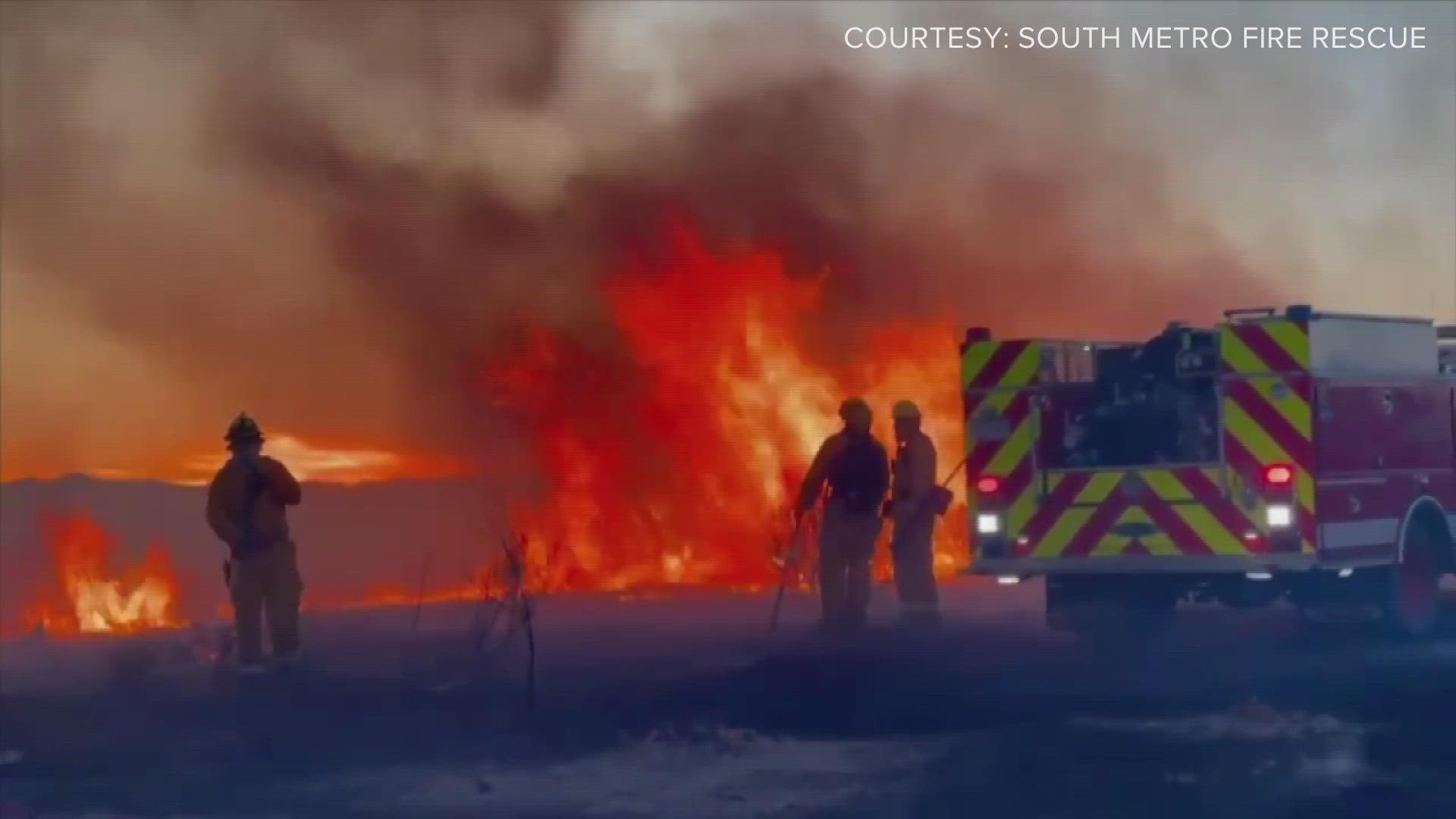CENTENNIAL, Colo. — Just a couple weeks ago, we saw heavy storms all across the Front Range. There was a lot of flash flooding and torrential rains inundated roads all across the metro.
This week has been dramatically different. The heat has been a dry one.
Despite all the rain we've had this season, firefighters are still concerned about high fire danger.
"The more precipitation that falls, generally, we start to see fuels grow," said Eric Hurst, public information officer for South Metro Fire Rescue (SMFR).
Greener looking fields may seem like they carry a lower fire risk, but looks can be deceiving. Even though they don't look dry, Hurst said underneath there's likely yellow, dead grass that can catch fire easily.


"They look very nice. They get tall. Especially the natural grasses and weeds," said Hurst.
He said rainfall this summer helped plants grow, creating even more fuel for fires.
"It can only be a few days after a rain storm when the grass can actually be susceptible to burning again," said Hurst. "Until we get some measurable rain and we see a cool down, we have high fire danger and everybody needs to be extra careful."
Temperatures have been consistently high with no rainfall. Hurst said humidity is expected to be in the single digits and teens on Thursday. Plus, there's some potential for wind.
"When we add those things together that can lead to a more rapid fire spread than we would see on a typical day," said Hurst.
He said when humidity drops below 20% that's when firefighters start to worry.
"When we see it in the teens and single digits that's when we're really concerned that vegetation fires could be pretty intense and burn quickly," said Hurst.
He said they've responded to a couple of vegetation fires in recent weeks.
"What our firefighters reported was pretty high flame height off of those fires and so we're talking about how tall the fire grows and in some of those cases it was taller than firefighters on scene," said Hurst.
It's why firefighters want people to be extra cautious with any sources of heat, sparks, or open flames.
“That can include people using machinery or equipment outside. That could be barbequing or using a smoker outside and certainly having recreational fires that aren’t in approved pits," said Hurst. "Have a method to put that fire out, garden hose nearby, a fire extinguisher nearby and if it's possible to delay that action until it's cooler and wetter, we would recommend that."
He said there's a fire weather watch for portions of the eastern plains on Thursday with a likelihood of conditions warranting a red flag warning. While winds may not get high enough in the metro for a red flag warning, Hurst said it's crucial to remember: if it's hot, dry, and breezy grass fires can still ignite and move quickly.
SUGGESTED VIDEOS: Colorado Climate


